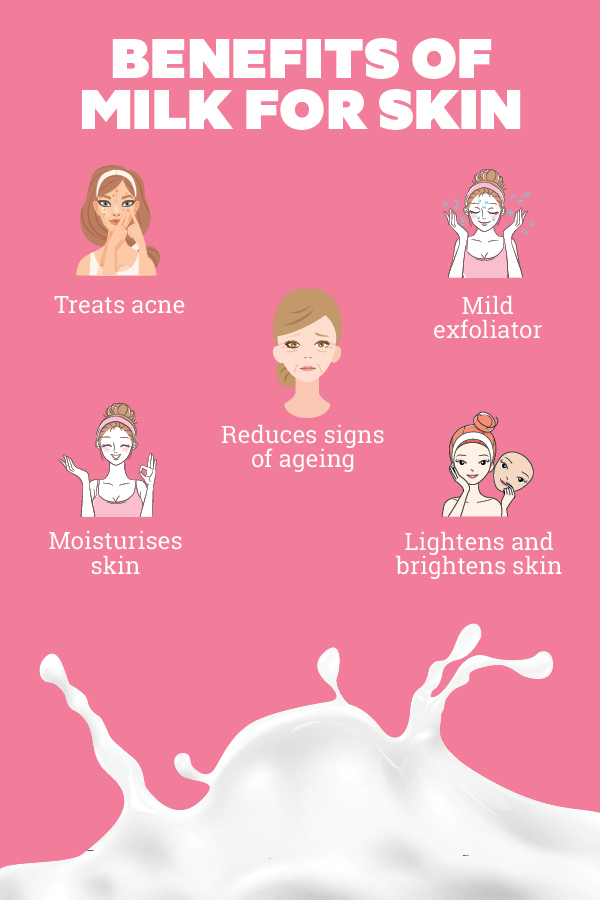As an Amazon Associate, I may earn a commission from qualifying purchases. Please note that you are never charged any extra for that.
Yes, you can apply milk on your face. Milk contains lactic acid and vitamins that can help nourish and exfoliate the skin, giving it a healthy glow.
Many people use milk as a natural cleanser and moisturizer due to its soothing and hydrating properties. When applied topically, milk can help in improving skin texture and reducing inflammation. Moreover, it can also help in lightening dark spots and pigmentation.
It’s important to note that individuals with dairy allergies or sensitivities should avoid using milk on their skin, as it may cause adverse reactions. Overall, using milk as a skincare ingredient can be beneficial for many people. When it comes to skincare routines, people are often looking for natural and effective ingredients. One such ingredient that has gained popularity is milk. But can you really apply milk on your face? Let’s explore the benefits of using milk as part of your skincare routine and whether it’s suitable for all skin types.

Credit: www.wikihow.com
Table of Contents
Benefits Of Applying Milk On Face
Milk has numerous benefits when applied on the face. Firstly, it helps improve skin hydration by deeply moisturizing the skin. The natural fats and proteins present in milk create a protective barrier, keeping the skin hydrated for longer periods.
In addition to hydration, milk contains lactic acid, which serves as a natural exfoliant. Lactic acid gently removes dead skin cells, revealing a brighter complexion and promoting cell turnover.
Milk also has soothing properties that help reduce redness and inflammation. It can assist in calming irritated skin, making it suitable for those with sensitive skin or conditions like acne or rosacea.
Overall, the application of milk on the face provides lasting hydration, exfoliation, and soothing effects, resulting in healthier and more radiant skin.
Credit: www.quora.com
Different Ways To Use Milk On Face
There are different ways you can incorporate milk into your skincare routine. One way is to use it as a cleanser. Simply dip a cotton ball in some milk and gently cleanse your face. The lactic acid in milk helps exfoliate and remove dead skin cells, revealing a brighter complexion.
Another way is to make a milk face mask. Mix equal parts milk and honey to create a nourishing mask. Apply it to your face and leave it on for 15-20 minutes before rinsing off with warm water. This mask can help hydrate and soothe the skin, leaving it soft and supple.
In addition, you can also mix milk with other natural ingredients like turmeric or oatmeal to create customized face masks for specific skin concerns. These masks can provide various benefits such as brightening the skin, reducing acne, or soothing irritations.
Overall, milk can be a beneficial addition to your skincare routine as it helps cleanse, hydrate, and nourish the skin. Give it a try and see the results for yourself!
Skin Types Suitable For Milk Application
Milk can be applied on all skin types as it contains lactic acid, beneficial for exfoliation and hydration. Its properties make it suitable for dry, sensitive, and combination skin, helping to nourish and moisturize the skin. However, individuals with a milk allergy or lactose intolerance should avoid using it on their face.
| Skin Types Suitable for Milk Application |
|---|
|

Credit: www.bebeautiful.in
Precautions And Alternatives
Before applying milk on your face, it is important to be aware of potential allergic reactions. Conduct a patch test on a small area of your skin to check for any adverse effects. If you are lactose intolerant or follow a vegan lifestyle, consider using plant-based alternatives such as almond milk or coconut milk. These alternatives can provide similar benefits without the risk of allergic reactions. Always remember to cleanse your face thoroughly before applying any natural remedies to ensure the best results.
Frequently Asked Questions Of Can I Apply Milk On My Face?
Is Applying Milk On Face Good?
Applying milk on the face can be beneficial as it contains lactic acid that helps exfoliate and moisturize the skin. It can also help in brightening the complexion and soothing irritation. Remember to do a patch test before use.
Can I Leave Milk On My Face Overnight?
Leaving milk on your face overnight is not recommended. It can cause irritation, clog pores, and lead to breakouts. Milk contains lactic acid, which can exfoliate the skin, but it’s better to use facial products specifically designed for overnight use.
Does Milk Remove Dark Spots?
Milk does not have a direct effect on removing dark spots. Ingredients like lactic acid in milk may help exfoliate skin, but it’s not a guaranteed solution. Consider consulting a dermatologist for suitable treatment options.
Can I Use Store Bought Milk On My Face?
Yes, you can use store bought milk on your face as a natural cleanser and moisturizer. It contains lactic acid and vitamins, making it beneficial for the skin. Just apply a small amount, leave it on for a few minutes, then rinse off with water.
Conclusion
Incorporating milk into your skincare routine can have several benefits. It is rich in nutrients like vitamins A and D, which can promote healthy and nourished skin. Milk also contains lactic acid, which can exfoliate and brighten the complexion. However, it is important to note that results may vary for individuals, and it is always best to perform a patch test before applying milk on your face.
So go ahead and give it a try, but remember to listen to your skin and adjust accordingly.
Leave a Reply